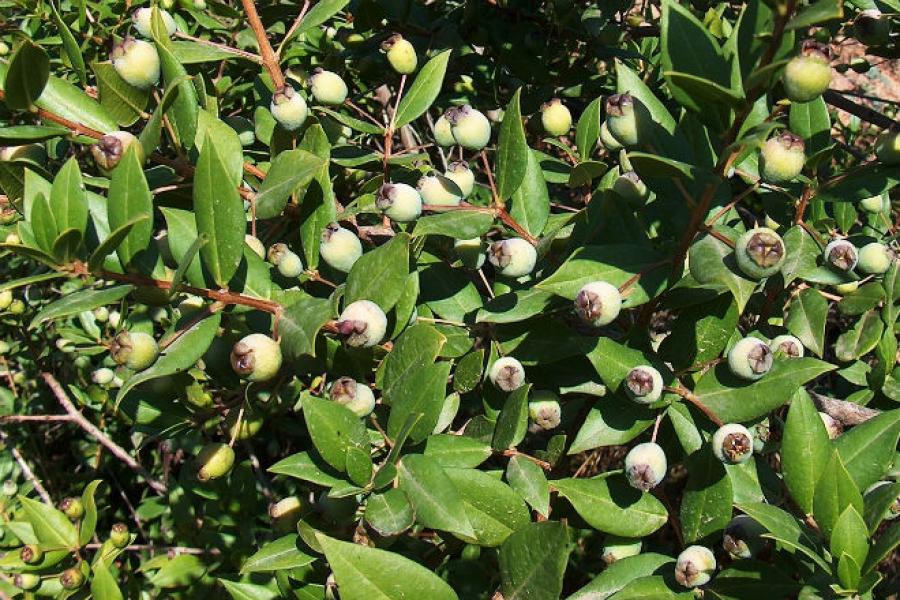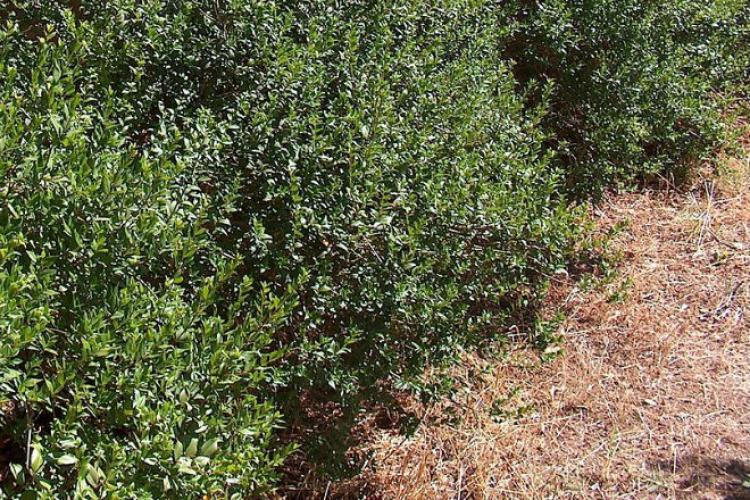Myrtle
Myrtle leaf bitter rather than sweet taste calls out for thriftiness in its use.
Myrtle, as herb or spice, is used around the Mediterranean, where it originated, having not found a wider audience because, despite of its pleasant aroma, the taste is rather bitter and it needs to be used sparingly.
The plants oils are used in perfumes and soaps. Myrtle has been used to treat medical conditions such as a dry cough, UTI and sinusitis. In the Middle East the leaves are used fresh in lamb and pork recipes, while the fruits are used as spices.
The Old Testament mentions myrtle several times, an indication of its significance for the Middle East peoples.
How to identify myrtle
Myrtle is a perennial bush with deep green, pointed leaves. The leaves have a smooth texture, emanating a refreshing aroma reminiscent of allspice.
During the spring and summer, a myrtle bush can grow up to 10 ft in height with fragrant white flowers followed by purple-black colored berries. The shiny oval shaped leaves smell similar to juniper when crushed.
How to use and store myrtle
Dried myrtle leaves are easy to find in most Western countries. Use Myrtle leaves in place of bay leaf in any of your favorite recipes. They can flavor any kind of meat (roasted, grilled or boiled) and fish. Whole leaves can be used to garnish your vinegar.
Use the crushed berries as a pepper-like seasoning.
Cooking with myrtle
Use the leaves as you would bay leaf, the berries as you would juniper berries or allspice.
Duck with myrtle
1 duck, 4 lb weight
1-2 celery stalks
1 carrot, peeled
1 onion, peeled and quartered
1 sprig parsley
enough myrtle sprigs and leaves to line a container able to hold the cooked duck
Place the duck in a large pan, cover with water, add salt, celery, onion, carrot and parsley. Bring to the boil, reduce heat and simmer until the duck is tender, about 1¼ hours.
Once is cooked, drain the liquid, cut the bird in 6-8 pieces and place the pieces in a container lined with myrtle sprigs and leaves. Cover with more sprigs and a clean towel. Let it stand for 2-3 hours.
Move the pieces to a serving plate, garnish and serve.
Myrtle substitution - if a recipe calls for myrtle and you don't have it, substitute 1 tsp crushed myrtle berries with:
- 1 tsp ground allspice
- 1 tsp crushed juniper berries
- 1/2 tsp ground black pepper
Substitute myrtle leaf with bay leaf, for cooking, and dry leaves for the grill fire with rosemary.
Experiment
Stuff the body cavity of poultry with myrtle leaves before roasting to give it a unique flavor. Remove the leaves before serving.
Wrap meat with myrtle sprigs before broiling or roasting; remove before serving.
Myrtle wood flavors any meat grilled over with a distinctive spicy taste, try it for your net barbecue.
If you are keen on home smoking, try myrtle wood.
How to grow myrtle
Myrtle is widely cultivated in Europe, where there are many varieties. This shrub is perfect for the winter herb garden, planting in the spring and trimming the next spring.
myrtle - myrtus communis myrtaceae
French - myrte.
German - myrte, brautmyrte.
Italian - mirto.
Spanish - mirto.


